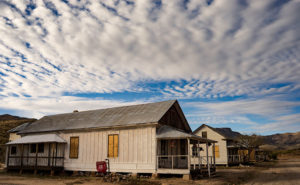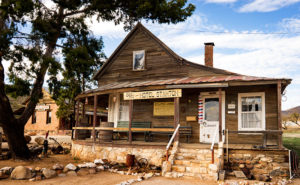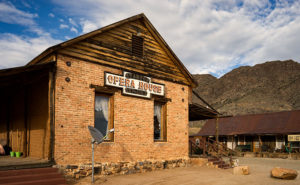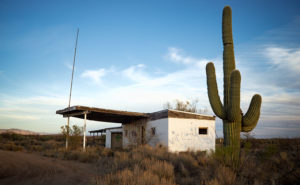On my last outing, I spent an afternoon exploring the Stanton Road searching for suitable photography subjects. The dirt road runs along the base of the Weaver range between Arizona Highway 89 and the Stanton ghost town. There, you can either continue up the hill on the back road to Yarnell—something that I’ll do in the future—or take the Octave road to the old Octave Mine site. I drove down the road until it became too rough for my wimpy truck and I turned around. The light was failing anyway, so I decided to call it a day. I was almost back to Stanton, and as I rounded a corner, I saw this scene and stopped the truck so I could take a photo. I call this shot Stanton Dusk and it’s my new photo of the week.
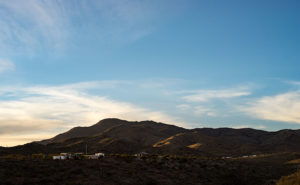
The low sun lighting the mountain ridges is what first caught my attention. The ridgelines highlighted like that keeps Weaver Mountain from being a flat silhouette and adds texture and perspective to the large dark shape. I think the sky and clouds contribute to a sense of open space. Finally, the light-colored structures atop the lower ridge anchor the frame. This shot has many of the elements that Ansel Adams captured in his masterpiece: Moonrise over Hernandez (I must mention that the image in this link is a poor representation of one of his original prints). I’m not saying that my shot has the stature of his, but Moonrise has long been a personal inspiration and I can see some of the influences in my shot. Of course, my shot doesn’t have a moon and—as some photographers do—I could add one in post-processing, but I won’t.
You can see a larger version of Stanton Dusk on my Website here. Examine both pieces and see if you agree with me. Can you see the similarity in the dark sky, the light structures, background mountain, and clouds, or am I fantasizing? Please feel free to share your thoughts in the comment section below and don’t be bashful about clicking on the Like button if you enjoyed this post.
Until next time — jw



